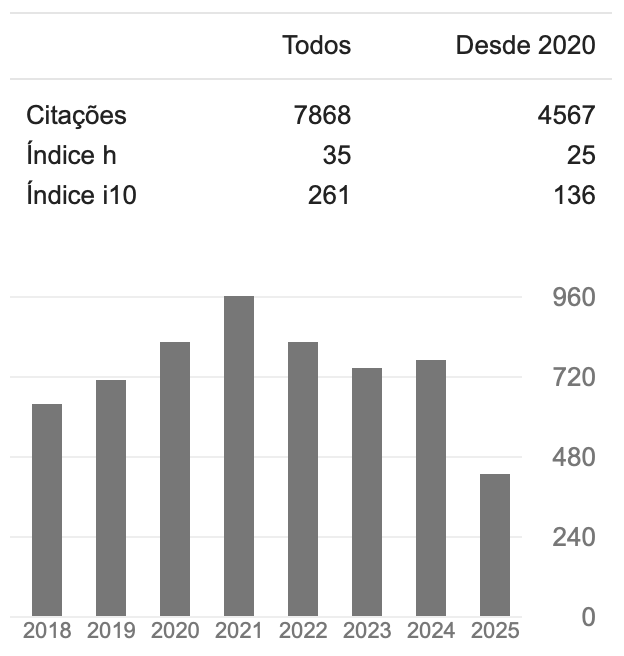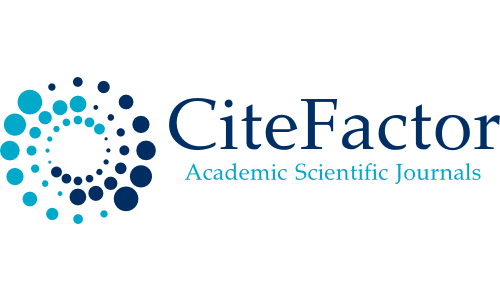Efeitos do treinamento resistido sobre indicadores de saúde de sobreviventes de câncer de mama
DOI:
https://doi.org/10.17765/2176-9206.2023v16n1.e11203Palavras-chave:
Exercício físico, Neoplasias da mama, Saúde holísticaResumo
Investigar os efeitos do treinamento resistido não linear (TRNL) sobre desempenho físico, antropometria, aspectos hematológicos, bioquímicos e biofisicoquímicos de sobreviventes de câncer de mama (SCM). Vinte e duas mulheres com histórico de mastectomia e linfadenectomia completaram 12 semanas de treinamento. Avaliações de força máxima (FM), resistência de força (RF), índice de massa corporal, percentual de gordura corporal (%GC), percentual de massa magra (%MM) aspectos hematológicos, bioquímicos e de estabilidade de membrana eritrocitária foram realizadas antes e depois do TRNL. Em todos os exercícios, ocorreram ganhos significantes (p < 0,05) de FM e RF. Além disso, houve diminuição do %GC e aumento do %MM, redução de eritrócitos, plaquetas e hemoglobina, bem como mudanças desejáveis para todas as variáveis de perfil lipídico. Esses achados revelam a necessidade de monitoramento constante desse público e, sobretudo, o impacto multidimensional do TRNL com benefícios sobre diversos indicadores de saúde em SCM.Downloads
Referências
1. Nardin S, Mora E, Varughese FM, D'Avanzo F, Vachanaram AR, Rossi V, et al. Breast cancer survivorship, quality of life, and late toxicities. Front Oncol. 2020;10:864. doi:10.3389/fonc.2020.00864
2. OMS. Organização Mundial da Saúde. Breast Cancer. 2021 [acesso em: 11 set. 2022]. Disponível em: https://www.who.int/news-room/fact-sheets/detail/breast-cancer.
3. Palesh O, Scheiber C, Kesler S, Mustian K, Koopman C, Schapira L. Management of side effects during and post-treatment in breast cancer survivors. Breast J. 2018;24(2):167-75. doi:10.1111/tbj.12862
4. Oliveira TR, Corrêa CSL, Weiss VF, Baquião APSS, Carvalho LL, Grincenkov FRS, et al. Câncer de mama e imagem corporal: impacto dos tratamentos no olhar de mulheres mastectomizadas. Saúde e pesquisa (Online). 2019;12(3):451-62. doi:10.17765/2176-9206.2019v12n3p451-462
5. Lovelace DL, McDaniel LR, Golden D. Long-term effects of breast cancer surgery, treatment, and survivor Care. J Midwifery Womens Health. 2019;64(6):713-24. doi:10.1111/jmwh.13012
6. Vance V, Mourtzakis M, Hanning R. Relationships between weight change and physical and psychological distress in early-stage breast cancer survivors. Cancer Nurs. 2019;42(3):E43-E50. doi:10.1097/NCC.0000000000000612
7. Shahril MR, Amirfaiz S, Lua PL, Nurnazahiah A, Zakarai NS, Kow VL, et al. Prevalence of metabolic syndrome among breast cancer survivors in East Coast of Peninsular Malaysia. BMC Public Health. 2021;21(1):238. doi:10.1186/s12889-021-10288-9
8. Subramaniam S, Subramaniam S, Jagadeesan M, Devi CS. Alterations in erythrocyte membrane structure of breast cancer patients treated with CMF--a lipid profile. Chemotherapy. 1994;40(6):427-30. doi:10.1159/000239303
9. Sabiston CM, Lacombe J, Faulkner G, Jones J, Trinh L. Profiling sedentary behavior in breast cancer survivors: Links with depression symptoms during the early survivorship period. Psychooncology. 2018;27(2):569-75. doi:10.1002/pon.4520
10. Buttros DAB, Branco MT, Orsatti CL, Almeida-Filho BS, Nahas-Neto J, Nahas EAP. High risk for cardiovascular disease in postmenopausal breast cancer survivors. Menopause. 2019;26(9):1024-30. doi:10.1097/GME.0000000000001348
11. El Haidari R, Abbas LA, Nerich V, Anota A. Factors associated with health-related quality of life in women with breast cancer in the middle east: A systematic review. Cancers (Basel). 2020;12(3). doi:10.3390/cancers12030696
12. Montano-Rojas LS, Romero-Perez EM, Medina-Perez C, Reguera-Garcia MM, de Paz JA. Resistance training in breast cancer survivors: A systematic review of exercise programs. Int J Environ Res Public Health. 2020;17(18). doi:10.3390/ijerph17186511
13. Ammitzboll G, Johansen C, Lanng C, Andersen EW, Kroman N, Zerahn B, et al. Progressive resistance training to prevent arm lymphedema in the first year after breast cancer surgery: Results of a randomized controlled trial. Cancer. 2019;125(10):1683-92. doi:10.1002/cncr.31962
14. Ammitzboll G, Kristina Kjaer T, Johansen C, Lanng C, Wreford Andersen E, Kroman N, et al. Effect of progressive resistance training on health-related quality of life in the first year after breast cancer surgery - results from a randomized controlled trial. Acta Oncol. 2019;58(5):665-72. doi:10.1080/0284186X.2018.1563718
15. Rhea MR, Ball SD, Phillips WT, Burkett LN. A comparison of linear and daily undulating periodized programs with equated volume and intensity for strength. J Strength Cond Res. 2002;16(2):250-5.
16. Freitas MAR, da Costa AV, Medeiros LA, Cunha LM, Coutinho Filho U, Garrote Filho MDS, et al. The role of the erythrocyte in the outcome of pregnancy with preeclampsia. PLoS One. 2019;14(3):e0212763. doi:10.1371/journal.pone.0212763
17. Brown LE, Weir JP. ASEP procedures recommendation I: Accurate assessment of muscular strength and power. JEPonline. 2001;4(3):1-21.
18. Leite MAFJ, Penha-Silva N, Oliveira CJF, Mariano IM, Giolo JS, Costa JG, et al. Effects of nonlinear training with resistance exercise on breast cancer survivor with lymphedema and hypothyroidism during adjuvant hormone therapy: a case study. J Womens Health, Issues Care. 2017;6(3):1-6. doi:10.4172/2325-9795.1000269
19. Patel AV, Friedenreich CM, Moore SC, Hayes SC, Silver JK, Campbell KL, et al. American College of Sports Medicine roundtable report on physical activity, sedentary behavior, and cancer prevention and control. Med Sci Sports Exerc. 2019;51(11):2391-402. doi:10.1249/MSS.0000000000002117
20. Ohira T, Schmitz KH, Ahmed RL, Yee D. Effects of weight training on quality of life in recent breast cancer survivors: The Weight Training for Breast Cancer Survivors (WTBS) study. Cancer. 2006;106(9):2076-83. doi:10.1002/cncr.21829
21. De Backer IC, Schep G, Backx FJ, Vreugdenhil G, Kuipers H. Resistance training in cancer survivors: A systematic review. Int J Sports Med. 2009;30(10):703-12. doi:10.1055/s-0029-1225330
22. Kirk B, Feehan J, Lombardi G, Duque G. Muscle, bone, and fat crosstalk: The biological role of myokines, osteokines, and adipokines. Curr Osteoporos Rep. 2020;18(4):388-400. doi:10.1007/s11914-020-00599-y
23. Dieli-Conwright CM, Parmentier JH, Sami N, Lee K, Spicer D, Mack WJ, et al. Adipose tissue inflammation in breast cancer survivors: Effects of a 16-week combined aerobic and resistance exercise training intervention. Breast Cancer Res Treat. 2018;168(1):147-57. doi:10.1007/s10549-017-4576-y
24. Herrero F, San Juan AF, Fleck SJ, Balmer J, Perez M, Canete S, et al. Combined aerobic and resistance training in breast cancer survivors: A randomized, controlled pilot trial. Int J Sports Med. 2006;27(7):573-80. doi:10.1055/s-2005-865848
25. Weycker D, Hatfield M, Grossman A, Hanau A, Lonshteyn A, Sharma A, et al. Risk and consequences of chemotherapy-induced thrombocytopenia in US clinical practice. BMC Cancer. 2019;19(1):151. doi:10.1186/s12885-019-5354-5
26. Muthanna FMS, Karuppannan M, Abdulrahman E, Uitrakul S, Rasool BAH, Mohammed AH. Prevalence and associated factors of anemia among breast cancer patients undergoing chemotherapy: A prospective study. Adv Pharmacol Pharm Sci. 2022;2022:7611733. doi:10.1155/2022/7611733
27. Abbasi F, Khademi Z, Eslami R, Milajerdi A. The effect of exercise training on serum glucose and lipid profiles in patients with breast cancer: A systematic review and meta-analysis of randomized clinical trials. J Phys Act Health. 2021;18(7):863-77. doi:10.1123/jpah.2020-0637
28. Marques LR, Diniz TA, Antunes BM, Rossi FE, Caperuto EC, Lira FS, et al. Reverse cholesterol transport: Molecular mechanisms and the non-medical approach to enhance HDL cholesterol. Front Physiol. 2018;9:526. doi:10.3389/fphys.2018.00526
29. Paraiso LF, de Freitas MV, Goncalves EOAF, de Almeida Neto OP, Pereira EA, Mascarenhas Netto RC, et al. Influence of acute exercise on the osmotic stability of the human erythrocyte membrane. Int J Sports Med. 2014;35(13):1072-7. doi:10.1055/s-0034-1371834
30. Paraiso LF, Goncalves EOAF, Cunha LM, de Almeida Neto OP, Pacheco AG, Araujo KB, et al. Effects of acute and chronic exercise on the osmotic stability of erythrocyte membrane of competitive swimmers. PLoS One. 2017;12(2):e0171318. doi:10.1371/journal.pone.0171318
Downloads
Publicado
Como Citar
Edição
Seção
Licença
A submissão de originais para a revista Saúde e Pesquisa implica na transferência da Carta Concessão de Direitos Autorais, pelos autores, dos direitos de publicação digital para a revista após serem informados do aceite de publicação.A Secretaria Editorial irá fornecer da um modelo de Carta de Concessão de Direitos Autorais, indicando o cumprimento integral de princípios éticos e legislação específica. Os direitos autorais dos artigos publicados nesta revista são de direito do autor, com direitos da revista sobre a primeira publicação. Os autores somente poderão utilizar os mesmos resultados em outras publicações, indicando claramente a revista Saúde e Pesquisa como o meio da publicação original. Em virtude de tratar-se de um periódico de acesso aberto, é permitido o uso gratuito dos artigos, principalmente em aplicações educacionais e científicas, desde que citada a fonte. A Saúde e Pesquisa adota a licença Creative Commons Attribution 4.0 International.
A revista se reserva o direito de efetuar, nos originais, alterações de ordem normativa, ortográfica e gramatical, com vistas a manter o padrão culto da língua e a credibilidade do veículo. Respeitará, no entanto, o estilo de escrever dos autores. Alterações, correções ou sugestões de ordem conceitual serão encaminhadas aos autores, quando necessário. Nesses casos, os artigos, depois de adequados, deverão ser submetidos a nova apreciação. As opiniões emitidas pelos autores dos artigos são de sua exclusiva responsabilidade.


















